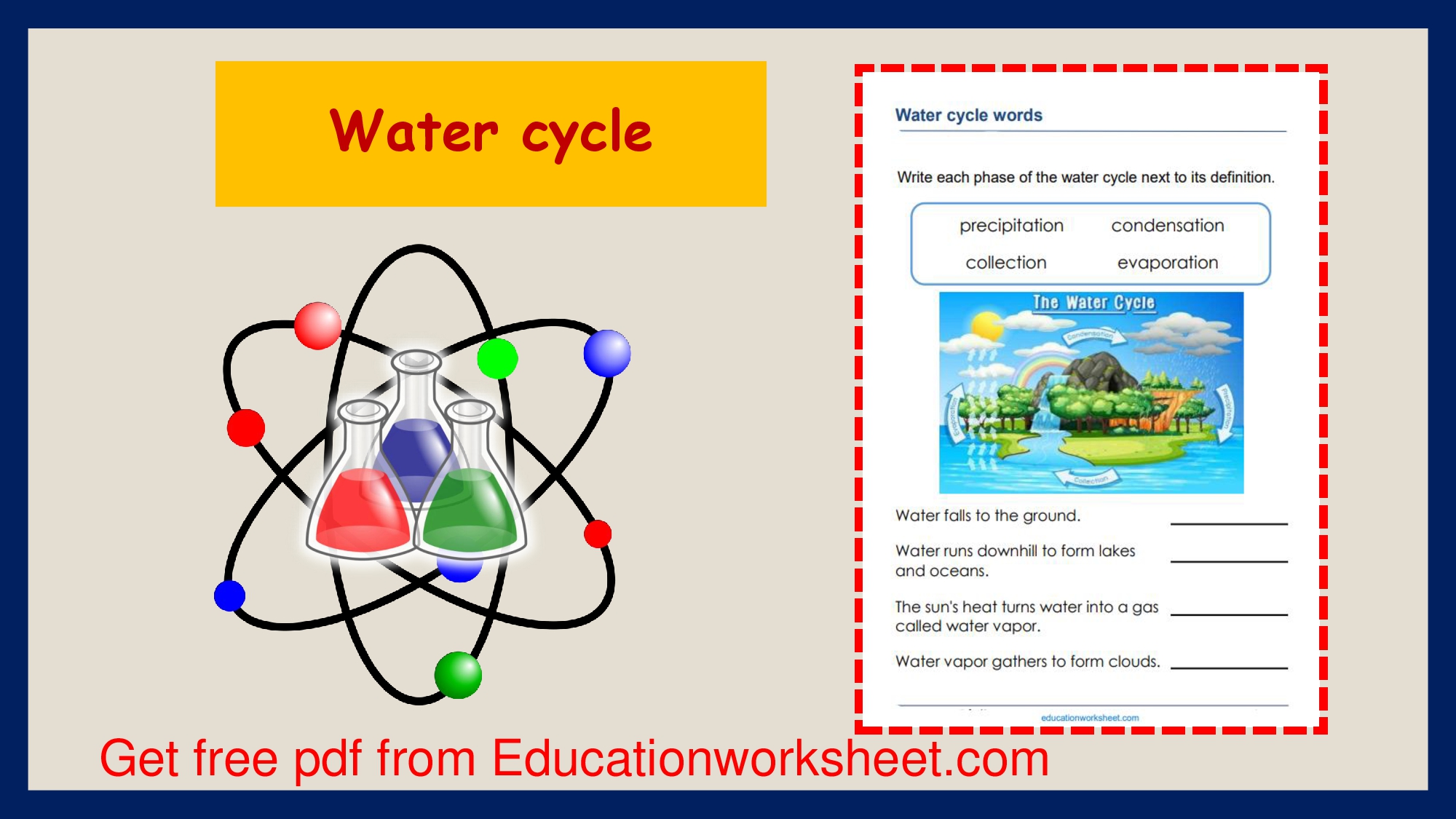water cycles worksheets.
water cycles worksheets.
The water cycle, also known as the hydrologic cycle, is a continuous and natural process through which water circulates and moves between the Earth’s surface, the atmosphere, and back again. It is essential for maintaining life on Earth and plays a crucial role in regulating our planet’s climate. The water cycles worksheets.of several key processes:
Evaporation:
This is the first step in the water cycle. It occurs when water from oceans, rivers, lakes, and even soil and plants is heated by the sun and turns into water vapor or steam. The water vapor rises into the atmosphere.
Condensation:
As the water vapor rises into the cooler upper atmosphere, it begins to cool and change back into tiny water droplets. These water droplets combine to form clouds.
Precipitation:
When the water droplets in clouds become too heavy to stay suspended in the atmosphere, they fall to the Earth’s surface as precipitation. Precipitation can take various forms, including rain, snow, sleet, or hail, depending on temperature and other factors.
Infiltration:
Some of the precipitation that falls onto the land is absorbed by the soil, filling underground aquifers and replenishing groundwater.
Surface Runoff:
Not all precipitation is absorbed by the soil. Some of it flows over the surface, forming streams, rivers, and eventually making its way to the oceans.
Transpiration:
Plants absorb water through their roots, which is then released into the atmosphere through small openings in their leaves in a process called transpiration.
Sublimation:
This process involves the direct conversion of water from a solid (ice or snow) to water vapor without passing through the liquid phase.
Evapotranspiration:
This is the combined process of water vapor being released into the atmosphere through both evaporation from bodies of water and transpiration from plants.
The water cycle is a continuous, interconnected system, and these processes are constantly occurring around the world. It helps distribute freshwater to different regions, replenishes groundwater, and plays a vital role in weather patterns and climate regulation. The balance and sustainability of the water cycle are crucial for supporting life on Earth and maintaining ecosystems.


